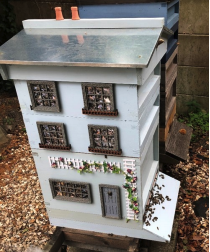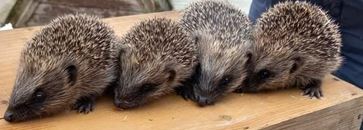ASIAN HORNET
Our busy volunteers at the New Forest Bee Keepers are working to heighten the awareness of the Asian Hornet risk to the New Forest and wider areas. We have had two Asian Hornet nests confirmed near Christchurch, Dorset on 1 October 2019. Earlier in 2019 a single hornet was confirmed in New Milton, Hampshire. In all cases the hornets were spotted and reported by a member of the public, which is why it is so important to share this information with our community.
What are the risks?
Asian hornets feed on all pollinating insects including bees. Pollinators are mainly bees and hoverflies, but also butterflies, moths, some beetles and wasps. In France, Asian Hornets have caused significant damage to honeybee colonies, threatening the viability of beekeeping and honey production. Of additional and immediate concern is the damage it could cause to wild pollinators as we cannot protect them, as well as the pollination services they provide to crops and wild flowers.
Are the public at risk?
All stings hurt to some extent! In the case of the Asian Hornet, the potency of the sting is because of the relatively large amount of venom injected. Being stung can be extremely painful and in some instances have required hospitalisation. Always seek advice from your GP if you are concerned about your reaction to stings from any stinging insect.
What to look out for?
• Queens are up to 30 mm in length and workers up to 25 mm (slightly smaller than the native European hornet )
• Mostly black body except for its 4th abdominal segment which is a yellow band located towards the rear
• It has characteristic yellow legs and an orange face
• Asian Hornet is a day flying species which, unlike the European hornet, ceases activity at dusk
• Active between April and November (peak August/September).
• Report any suspect sightings
If you suspect you have seen an Asian hornet you can report this using the iPhone and Android app ‘Asian Hornet Watch’, or by emailing alertnonnative@ceh.ac.uk.
A VIEW FROM A MEMBER
My bees in my quiet garden nook are already buzzing into action on the warmer days we have had through January and February. They are carrying out cleansing flights, bringing back pollen and generally buzzing around my garden in a content way. Hopefully we won’t have too much of a cold snap as we did early in 2019, if we do I will have to start to feed the bees more fondant to keep their stores up and the hive warm. Keeping the cluster of bees warm requires a huge amount of energy which is why bees need forms of high energy sugars, especially if their winter stores are running low. Inside the beehive, the temperature is usually kept at around 15-20C at the centre of the colony, whatever the temperature outside. Whilst my bees are keeping themselves busy and not needing too much input from me just now, I am building frames, cleaning old equipment and spending some time studying for the Module exams with the BBKA, and of course attending the talks arranged by the New Forest Beekeepers every third Thursday of a month at the Lyndhurst Community Centre. If you’d like more information, visit us www.newforestbees.co.uk.











